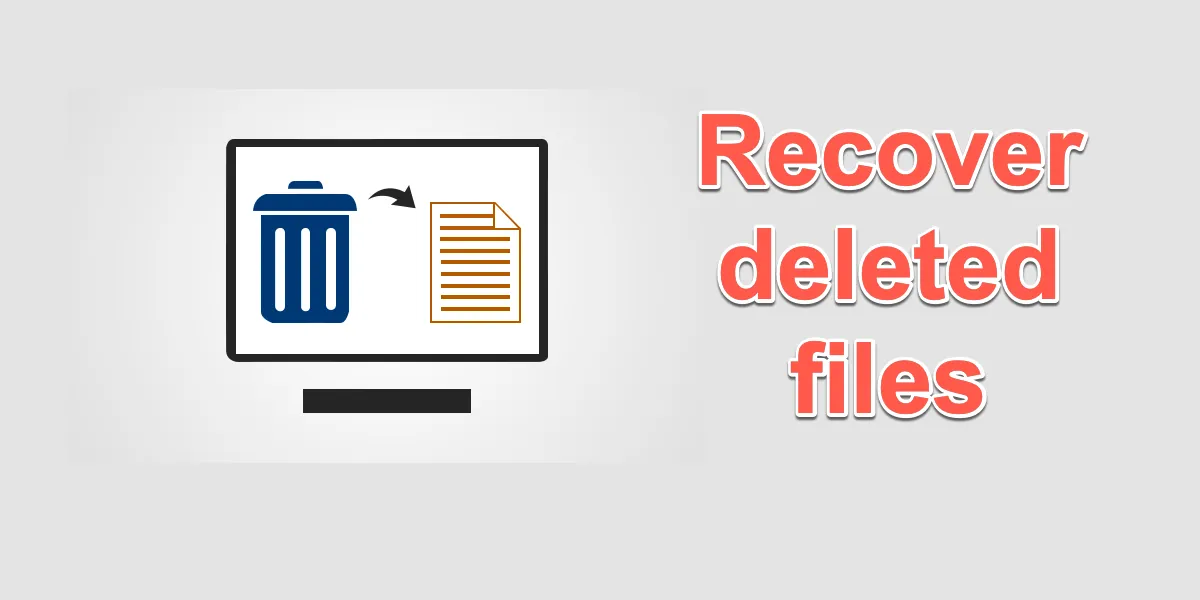Tech
Quick Guide to Recovering Deleted Files Safely

Ever had that heart-stopping moment when you accidentally hit “delete” on a file you desperately needed? Trust me, you’re not alone. Losing important files can feel like a digital disaster, but fear not! In this quick guide, we’ll explore how to safely recover deleted files and save you from unnecessary panic. Whether you’re a tech wizard or a complete novice, I’ve got you covered!
Understanding How Deletion Works
Let’s start at the ground level. When you delete a file, it doesn’t vanish into thin air. Instead, your computer removes the pointer to that file, marking the space as available for new data, but the actual content is still lurking there—at least until it gets overwritten.
So if you accidentally delete a file, the first rule of thumb is to stop using that device immediately. Why? Because continued use increases the chances of overwriting that precious data. Pause, take a deep breath, and follow the steps below.
Recovering Files on Windows
Check the Recycle Bin
The first and easiest step is to check your Recycle Bin. You’d be surprised how many files get retrieved this way!
-
- Open the Recycle Bin: You can find it as an icon on your desktop.
- Search: Look for the deleted file. If you find it, right-click and select Restore. Boom! Your file is back in its original location.
Use File History
If the Recycle Bin isn’t your lucky charm, Windows has a built-in feature called File History.
-
- Go to Settings: Click on the Start menu and head to Settings > Update & Security > Backup.
- Restore files: Click on More options then on Restore files from a current backup. You’ll be able to browse through your backups!
Third-Party Recovery Software
Okay, if all else fails, you might need to consider using third-party recovery tools. Programs like Recuva or EaseUS Data Recovery Wizard can help recover files that aren’t in the Recycle Bin or backed up.
-
- Recuva: A user-friendly option that offers a free version for basic recovery needs.
-
- EaseUS Data Recovery Wizard: This one is great if you’re looking for more advanced features.
Just remember to install any recovery software on a different drive than the one where your deleted files were located!
Recovering Files on Mac
Check the Trash
Similar to Windows, your first stop should be the Trash bin.
-
- Open Trash: Click the Trash icon in your dock.
- Recover: If your deleted file is there, right-click it and select Put Back.
Time Machine
If you’ve set up Time Machine backups, you’re in luck! Here’s how to restore files:
-
- Open the folder: Where the file was originally located.
- Enter Time Machine: Click on the Time Machine icon in the menu bar and select Enter Time Machine.
- Find your file: Scroll through the timeline to find a version of the file you want to recover, then click Restore. Easy peasy!
Third-Party Software
For those who didn’t set up Time Machine and didn’t find luck in the Trash, you might want to look into software options like Disk Drill or Stellar Data Recovery.
-
- Disk Drill: Offers a free version and has powerful recovery options. Plus, it’s super simple to use!
-
- Stellar Data Recovery: Known for its effectiveness, though its trial version has limited recovery options.
Recovering Files on Mobile Devices
For Android
If you’re using an Android device, first check your trash or recycle bin in the app you used.
-
- Google Photos: For photos, check the Trash feature in Google Photos.
- Third-party apps: Look into apps like DiskDigger or EaseUS MobiSaver for recovering lost files.
For iPhone
Apple devices have their own ways to recover lost content:
-
- Check Recently Deleted: For photos, go to the Photos app > Albums > Recently Deleted, and you can recover anything you’ve deleted in the last 30 days.
- iCloud Backup: If you regularly back up, you can restore your iPhone from a previous backup through the iCloud settings.
If you don’t have access to these backups, you may need to dig into third-party recovery tools designed specifically for iOS.
Best Practices for Preventing Data Loss
Now that you’ve got some recovery methods, let’s chat about how to avoid the drama altogether:
-
- Cloud Storage: Use services like Google Drive, Dropbox, or OneDrive. These not only back up your files but also keep versions of old content, so restoring is a breeze.
-
- Regular Backups: Whether it’s to an external hard drive or cloud storage, having recent backups can save you a lot of grief.
-
- Be Careful with Deletes: Always double-check before you hit delete. Try to ensure you’re only removing files you genuinely don’t need.
When to Call in the Experts
If you’ve followed all the steps and your precious files are still MIA, it might be time to get some professional help. Data recovery specialists can often retrieve files that typical approaches cannot. Just remember, this can get pricey, so weigh your options carefully.
For more in-depth insight, check out this article from LifeWire on different methods of recovering lost files.
Remember: Stay Calm and Backup!
The world of technology is ever-changing, and so is the way we manage our information. Whether you’re recovering from a panic or preventing future losses, understanding how file deletion and recovery works is essential. Help yourself today by using cloud storage, regular backups, and always being cautious when you’re clicking that delete button.
With these tips, you’re not just a user; you’re now empowered to handle your files like a pro!
